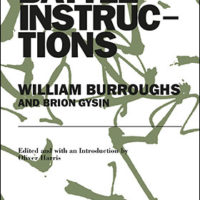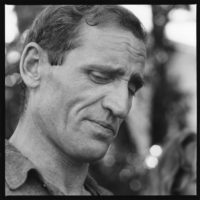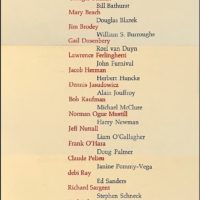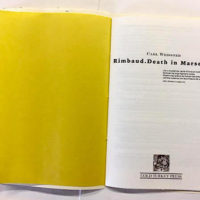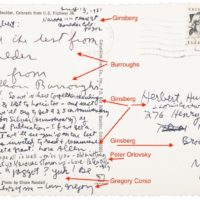Although Albert Camus does not come up in WHO’S YOUR DEATH HERO? — a conversation between the filmmaker Richard Kern and the writer who goes by the name of Supervert — he would be my candidate in answer to the title. Camus’s declaration, “I want to keep my lucidity to the last and gaze upon my death with all the fullness of my jealousy and horror,” conveys precisely what this book is about as if he’d read it himself.
Fascinating Passages from Fascinating Books
‘Really, poems by William Burroughs? Yes indeed, and what we know as The Cut-Up Method he initially called ‘Newspeak Poetry,’ making clear his original frames of reference.’ — MINUTES TO GO Redux
Fascinating Passages from Fascinating Books
[Alexander’s father] Philip’s training for power was proceeding along useful if unorthodox lines. His experience as a member of the Macedonian royal household had given him an understandably cynical view of human nature: in this world murder, adultery and usurpation were commonplace. … Philip took it as axiomatic that all diplomacy was based on self-interest, and every man had his price: events seldom proved him wrong.
A New Online Event Series
‘CHANGE’ at The Graduate Center, CUNY
A time of extraordinary social upheaval demands—and presents new opportunities for—CHANGE. In this new weekly series, leading thinkers explore ways to create a more democractic society.
GC CUNY at the Center of the Conversation
Leon Levy Center for Biography to Launch 2020 Events
Eddie S. Glaude Jr. on James Baldwin • Rick Perlstein on Ronald Reagan • Fredrik Logevall on John F. Kennedy • David S. Reynolds on Abraham Lincoln • Judith Thurman to give the Annual Leon Levy Lecture on Biography • David Nasaw on his new book, ‘The Last Million’
William Burroughs’s Prophetic Mutterings
‘This is Burroughs the self-styled revolutionary at his most historically explicit, the courageous whistle-blower in 1960 denouncing and exposing media magnates, business moguls, bankers, political leaders and scientists as part of a larger, deeper conspiracy at work behind the scenes of the mid-twentieth century.’ By Oliver Harris BATTLE INSTRUCTIONS addresses particular individuals, which marks a […]
Is This a Never-Before-Published Masterpiece
From the Most Dangerous Writer on the Planet?
When a review starts off like this . . . ” ‘BATTLE INSTRUCTIONS’ is the most important new publication by William S. Burroughs not only since the writer’s death in 1997 but quite possibly since ‘The Third Mind’ made it into print in 1978″ . . . attention must be paid.
Shakespeare’s Sonnets: A Sequel
As I continue to read “All the Sonnets of Shakespeare,” edited by Paul Edmondson and Stanley Wells, I’m more than ever impressed by the remarkable clarity of the presentation. An added bonus is the intimacy of the scholarship, especially for a non-specialist like me. “The year 1591 saw the beginning of a sudden vogue,” they write, “for the composition and publication of sequences of interrelated sonnets initiated by the posthumous publication in that year of Sir Philip Sidney’s ‘Astrophil and Stella’.” Shakespeare’s 154 sonnets are “on the whole, a collection of often highly personally inflected poems written over at least twenty-seven years, rather than a sequence aimed at catching the mood and developing the taste for a literary fashion. His sonnets are not public poems written and published for money; . . . they were published a decade after the vogue for sonnets had passed, printed only once, and were ‘clearly a flop on their first appearance.’ He seems interested primarily in using the sonnet form to work out his intimate thoughts and feelings.”
A New Way to Look at Shakespeare’s Sonnets
Instead of reading the sonnets in the numbered sequence of the 1609 folio, which is the usual way, the editors of ‘All the Sonnets of Shakespeare’ examine them in what they believe was their order of composition. This puts a special focus on the considerable tinkering that went into them. Their method yields lovely insights that bring us closer to the man himself and his development as a writer.
‘The Greatest Piece of Writing’ Kerouac Ever Saw
It’s a 16,000-word letter that Neal Cassady wrote to Jack Kerouac, who said it was his inspiration for On The Road. The letter, written in 1950, went missing and was found in an attic in Oakland, California, in 2011. Now for the first time it is being brought out in full by the London-based publisher Black Spring with an introduction by the noted Beat scholar A. Robert Lee, along with illustrations. I’m betting Lee will tell us if the letter really was the inspiration for On the Road—Kerouac, true to his calling, loved to make things up— and if he really did adopt his prose style from it. The reality is likely more nuanced than the legend.
Moloko’s Burroughs-Gysin Lockdown Reading
A summer package for the avant garde:
‘BRION GYSIN LET THE MICE IN’ edited and with a foreword by Jan Herman and with an introduction by Douglas Field.
“MINUTES TO GO Redux’ edited and with an introduction by Oliver Harris.
‘THE EXTERMINATOR Redux’ edited and with an introduction by Oliver Harris.
‘BATTLE INSTRUCTIONS’ edited and with an introduction by Oliver Harris.
This Side of Grub Street
Readers wanted to know all about their celebrities, or at least about my encounters with them. From A-listers and B-listers right down to Z-listers. The whole stupid alphabet top to bottom. Names to be forgotten one day. They needed the publicity and I needed the job. I wasn’t a star fucker—I’ll say that, having come from the newsroom with no more interest in celebrities than any routine reporter. I was a stand-in for star fuckers.
Is It a Moon Shot? Nope, It’s a Book Chat.
Follow the countdown—the days, hours, minutes, and yes, even the seconds—to Blake Gopnik’s chat with Annalyn Swan about his biography of Andy Warhol. Well, it IS a big book. Big in page count (976). Big in subject (Warhol’s influence rivals Picasso’s.) Stellar in praise. (I’ve read only one review that dumps on it, persuasively.) So okay, a countdown.
A San Francisco Little Mag Subscription-cum-Ad-Rate Card
This is what one looked like in the old days—1968 to be precise—and have a look at those prices. Then check out the contributors.
The Way the Lines Break
FOR THÉOPHILE GAUTIER
This is what is——the serenity of now
suspended like cumulus clouds, the night
freshened with rain and shafts of white
moonlight so bright I can read you
by the window. This is the tide hidden
from the volcano’s molten flux.
Can the Internet Do This? Nope.
Folio as ‘objet d’art’: “Death in Marseille” by Carl Weissner. Translated and edited from the German by Keith Seward & Jan Herman. Designed and printed by Gerard Bellaart on Handmade Barcham’s Greenpaper. Trim size: 328×220 mm. Edition limited to 12 copies.
Little Magazines and Postcards from Beyond
Jeff Ball, collector extraordinaire of rare Burroughsiana, tells me he recently picked up a handful of relevant little magazines at auction in his seemingly endless quest to capture an intriguing slice of literary history. His collection also includes scattered ephemera which illuminate peculiar nooks and crannies of that literary history sometimes to telling effect. Have a look at a postcard to Herbert Huncke—signed by Allen Ginsberg, William Burroughs, Peter Orlovsky, and Gregory Corso—that he also recently acquired. The ironies abound.


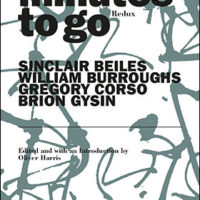
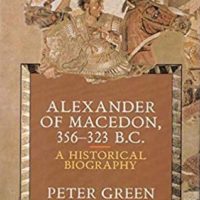


![Burroughs wearing his fedora. [Photo: Harriet Crowder]](https://www.artsjournal.com/herman/wp/wp-content/uploads/2015/02/Burroughs-fedora360jpg-200x200.jpg)
